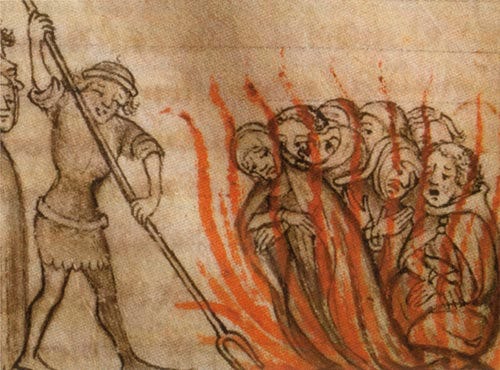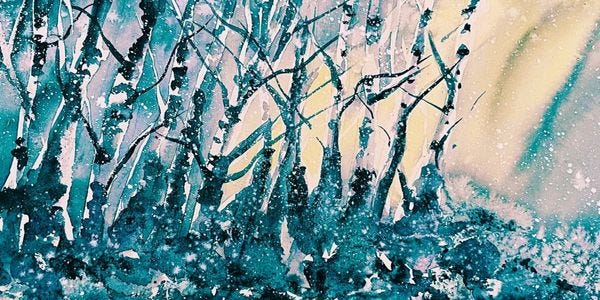Friday the 13th. A day, somehow ingrained in my imagination.
Steeped in folklore and superstition, its origins can be traced back to ancient times.
An unfortunate dinner guest
In Norse mythology, it's believed that the god Odin invited twelve other gods to a banquet in Ásgarðr.
However, there was an uninvited thirteenth guest, Loki — the shapeshifting, wily trickster.
Loki gave a spear, sharpened from a mistletoe bush to Höðr, the blind son of Odin and Frigg. Höðr inadvertently shot Baldr, another son of Odin and one of the most beloved of all the gods.1
This tragedy sowed the seed of the belief that thirteen was an unlucky number.
Another unfortunate dinner guest…
As it happens, it wasn’t just the Norse Gods who had bad table manners.
According to Christianity, the Last Supper was the final meal Jesus shared with his disciples and was held the night before his crucifixion on ‘Maundy Thursday’.
The thirteenth guest to take his seat at the table was the infamous Judas Iscariot, the betrayer of Jesus, reinforcing the folklore around the number thirteen.
Knights Templar
It seems Friday, October 13th, 1307, sparked the ominous connection between Friday and thirteen.
On this fateful day, the Knights Templar were arrested for heresy at the command of France’s king, Philip IV. Many were tortured — forced into making false confessions.
When the knights were burned at the stake in Paris, the order’s leader, Jacque de Molay, cried out:
“God knows who is wrong and has sinned. Soon, a calamity will occur to those who have condemned us to death.”
It was this curse that put a ‘calamity’ on Friday the 13th through the ages.

Modern fear
Such is the fear of Friday the 13th; there is a name for it:
paraskevidekatriaphobia
Good luck pronouncing that one!
From irrational superstition to hope
‘“Hope” is the thing with feathers’ is a poem by Emily Dickinson, first published in 1891, after her death.
With its beautiful imagery, it speaks to the idea that hope is a resilient, enduring force that asks for little in return.
“Hope” is the thing with feathers BY EMILY DICKINSON “Hope” is the thing with feathers - That perches in the soul - And sings the tune without the words - And never stops - at all - And sweetest - in the Gale - is heard - And sore must be the storm - That could abash the little Bird That kept so many warm - I’ve heard it in the chillest land - And on the strangest Sea - Yet - never - in Extremity, It asked a crumb - of me. (Poetry Foundation.org)
Hope is always present, even in the darkest of times.
What I’m up to this week
CREATING: prep work for my upcoming art workshops (find out more about them here). Filming a watercolour video for the monthly Substack online Art Club.
READING: The Almanac: A Seasonal Guide to 2023 (Lia Leendertz).
LISTENING: ‘Blackstar’, David Bowie’s final album (Jan 8th 2016 ). An album that’s hard to categorize. A powerful, intriguing fusion of art rock and jazz.
"At once emotive and cryptic, structured and spontaneous and, above all, willful, refusing to cater to the expectations of radio stations or fans". (New York Times)
‘The Death of Baldur’ https://norse-mythology.org/tales/the-death-of-baldur/

